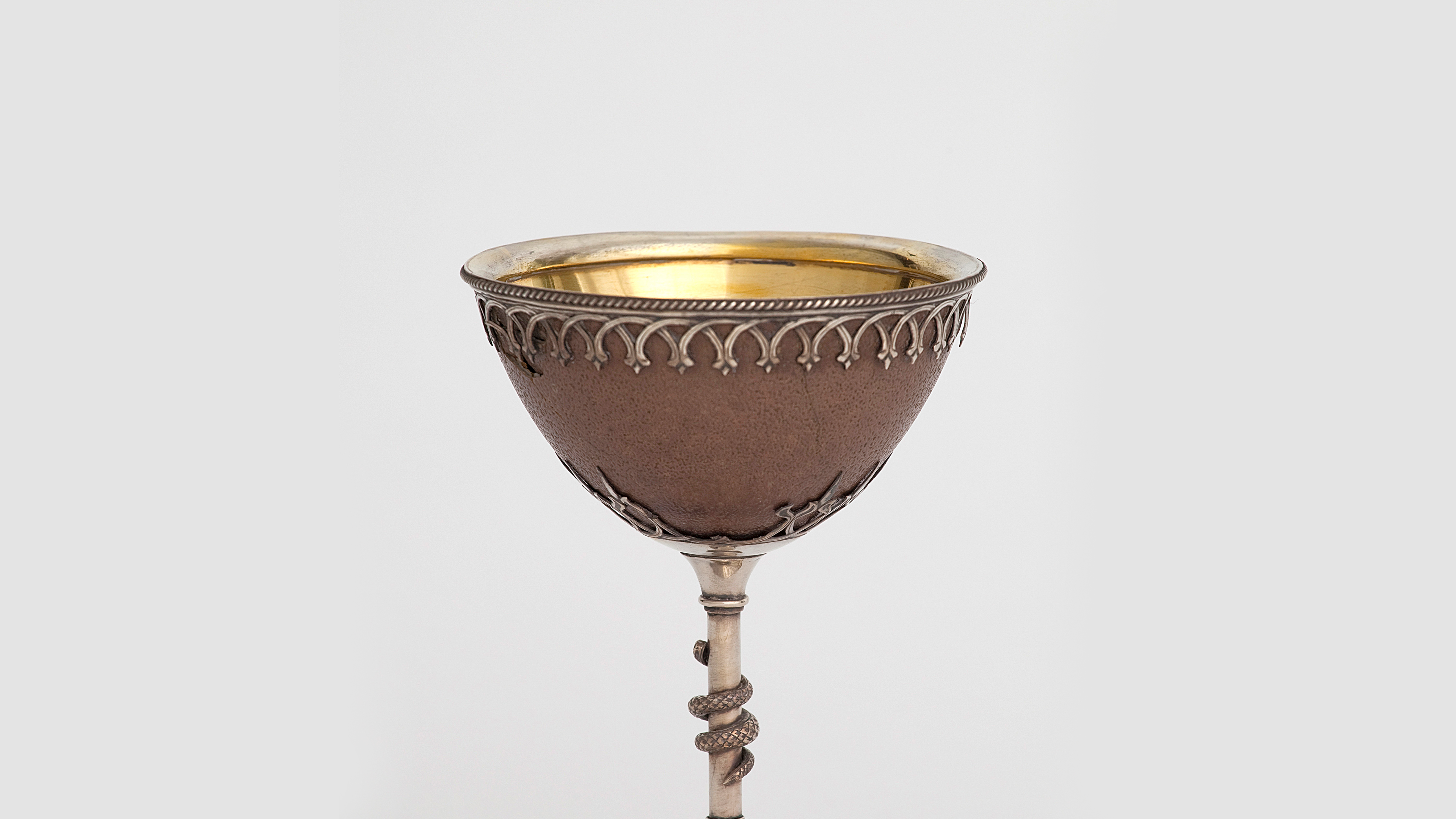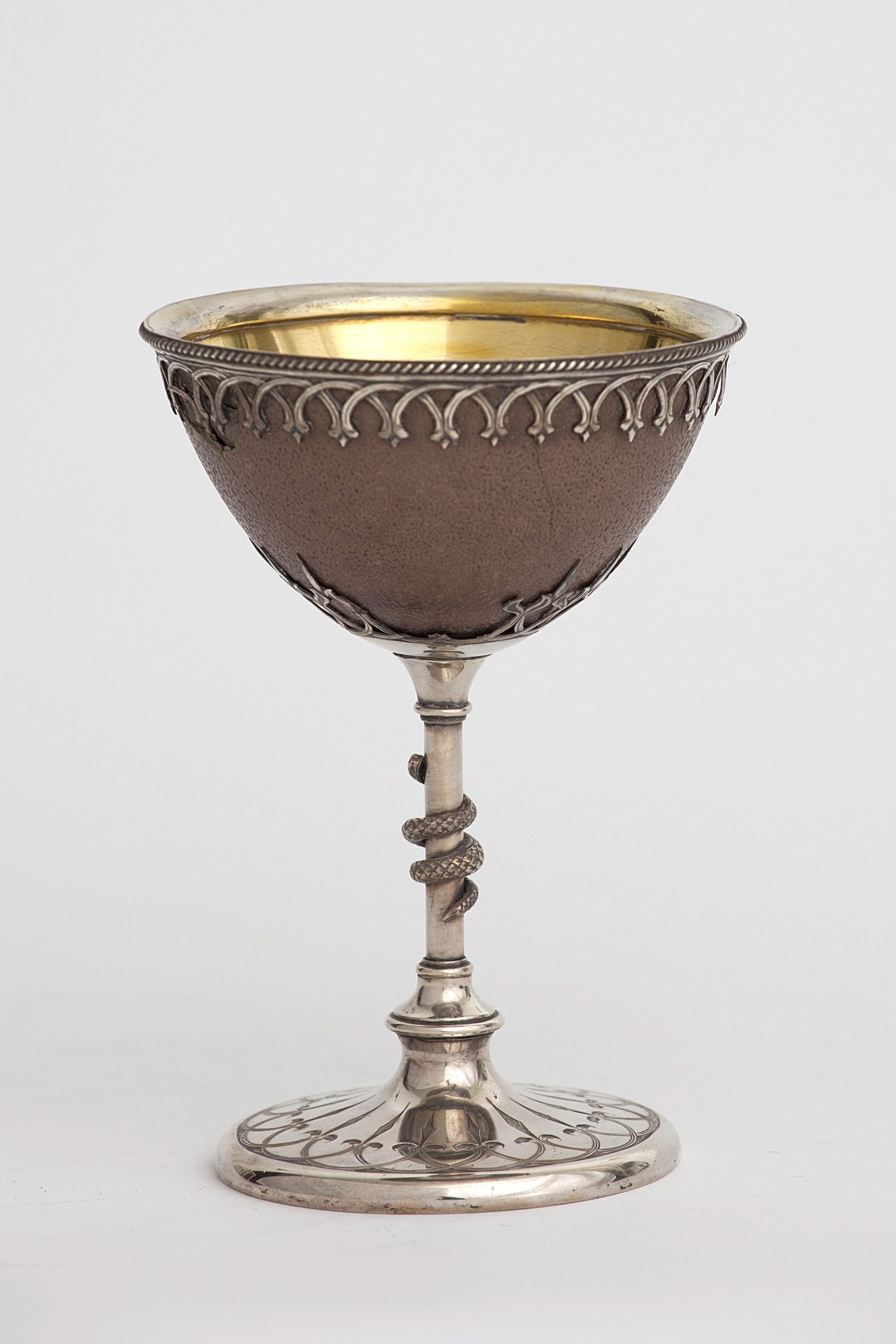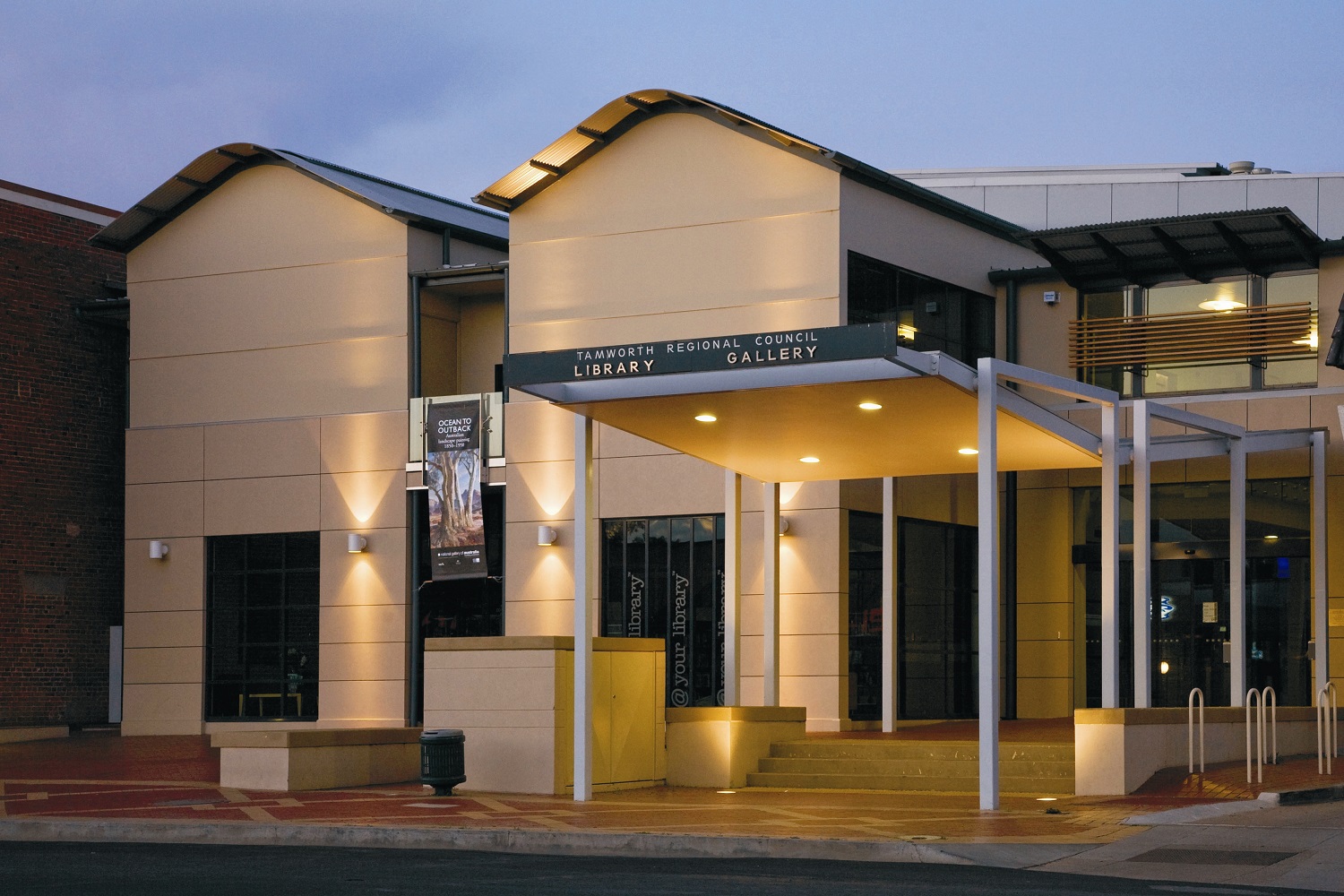From Ostrich to Emu Eggs
An Australian Chalice
In 1866, the Danish-born silversmith Christian Ludwig Qwist sent a silver-mounted emu egg jug and drinking cups, made in his Hunter Street shop in Sydney, to the Intercolonial Exhibition in Melbourne.
Qwist arrived in Melbourne in 1853, in the early years of the gold rush. He’d worked as a photographer and silversmith in the boom town of Bendigo, but by 1860 had relocated to Sydney, where he worked in the studio of Julius Hogarth, another Danish silversmith. Perhaps influenced by the European tradition of decorating ostrich eggs from Africa with silver mounts and floral decorations, Qwist produced a number of fashionable presentation items made from emu eggs, decorated with Australian flora and fauna.
This gilt-lined chalice, formed from half an emu egg, is part of a set, perhaps similar to, or the same as, the one exhibited at the Intercolonial Exhibition. The snake coiled on the stem of the goblet echoes the elegantly poised snake that forms the handle of the matching claret jug.
Qwist made his reputation in the production of trophies and presentation cups, and he seems to have created a number of emu egg goblets and jugs. A set was presented to a Mr Joseph by Sydney’s Jewish community in 1867, and others were displayed at the Paris Exhibition of 1867.





